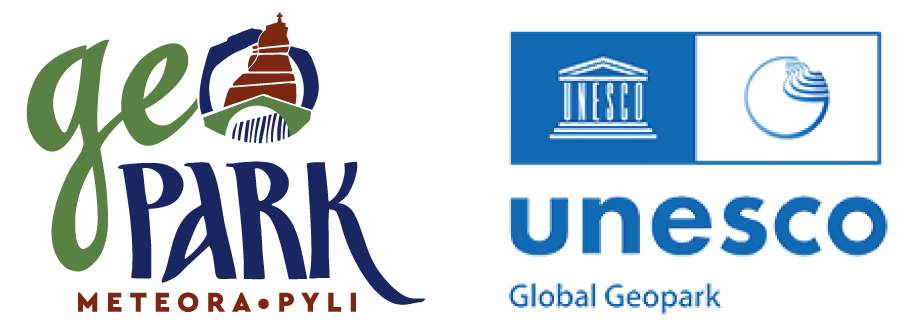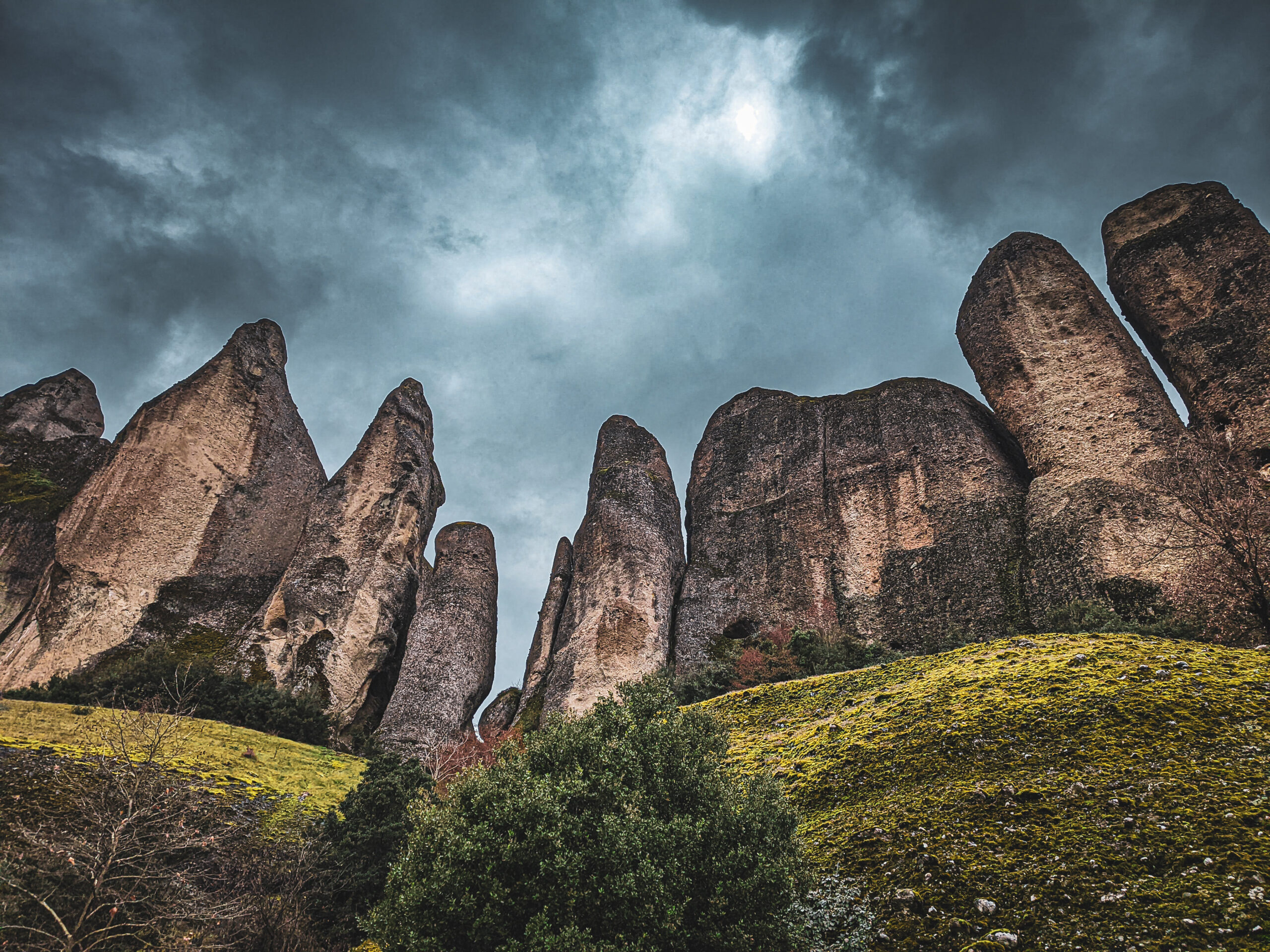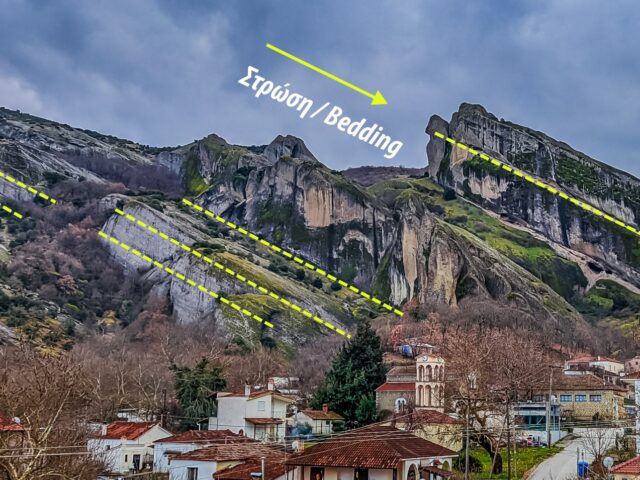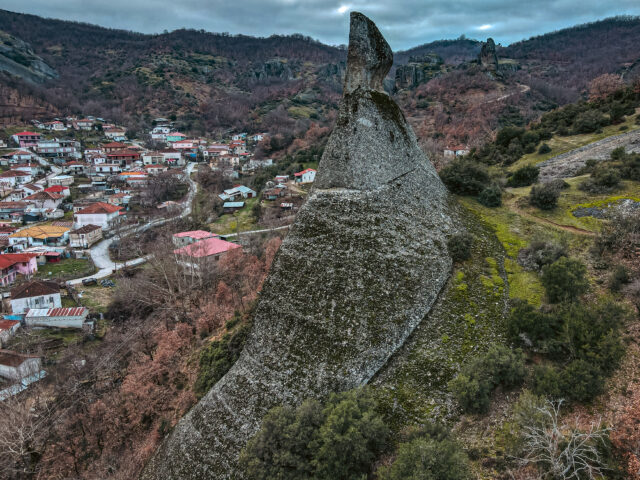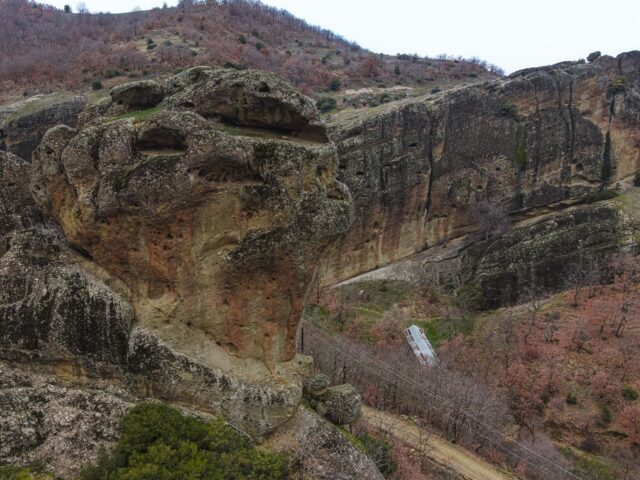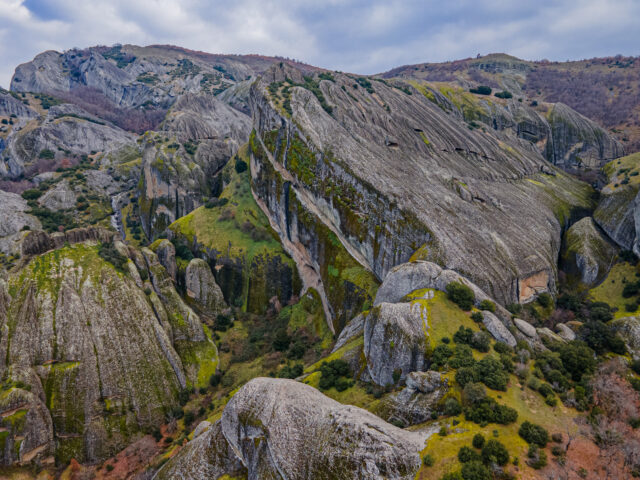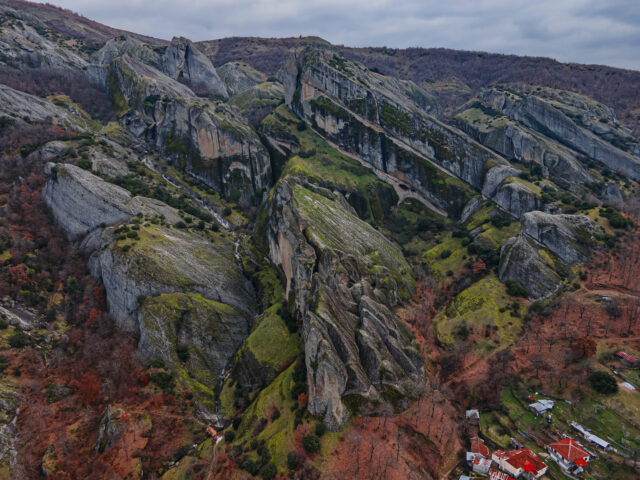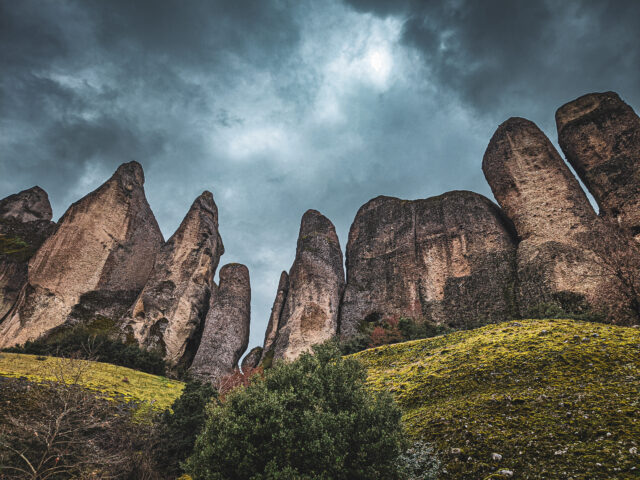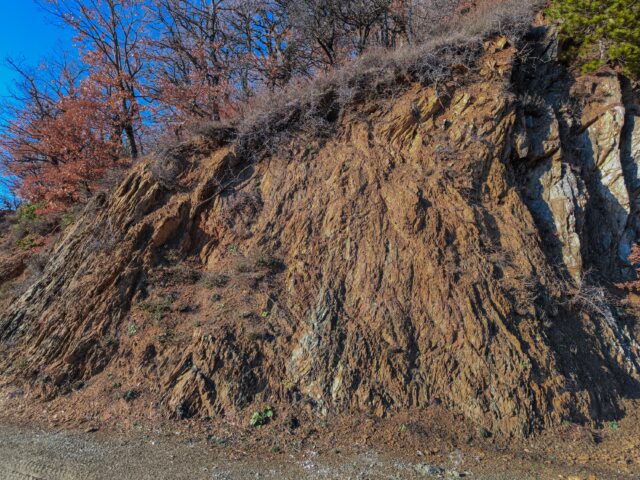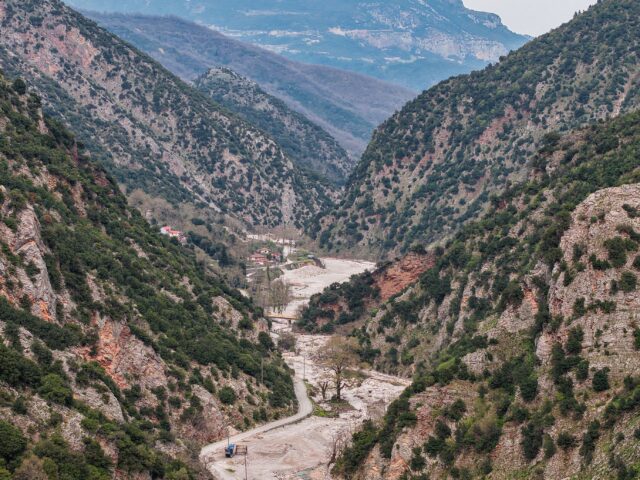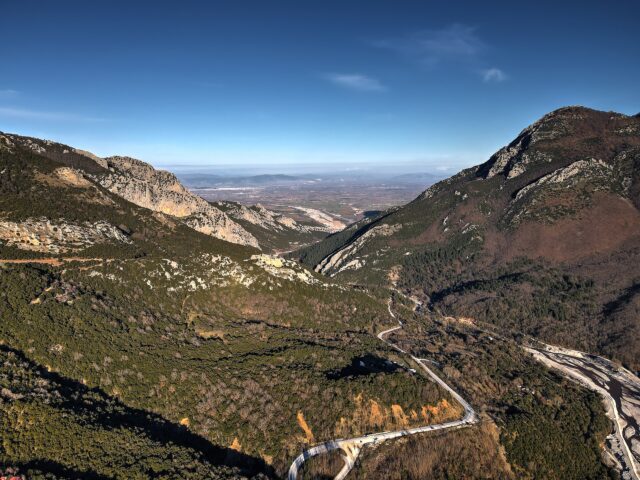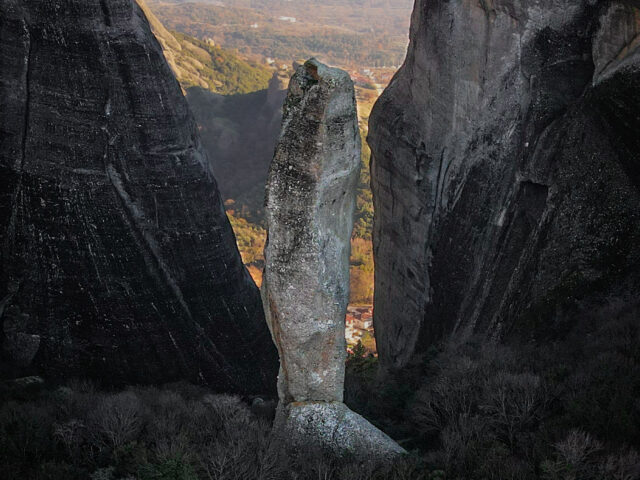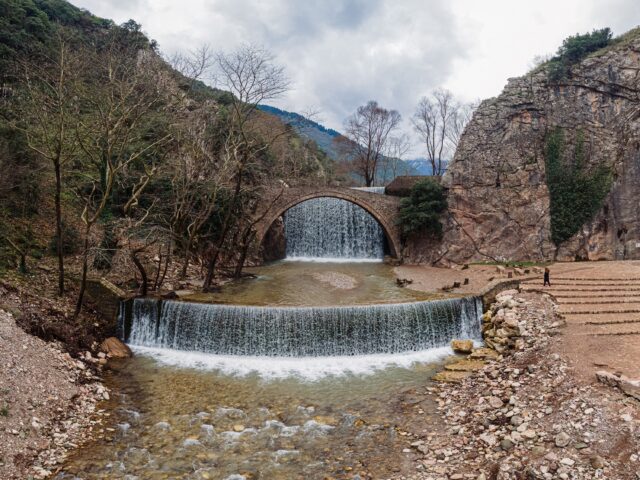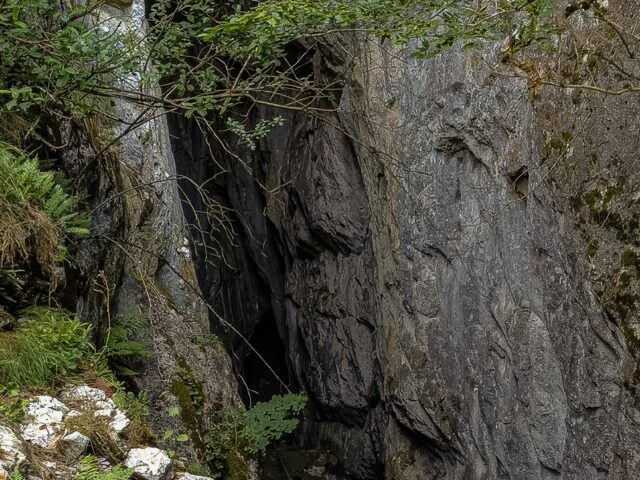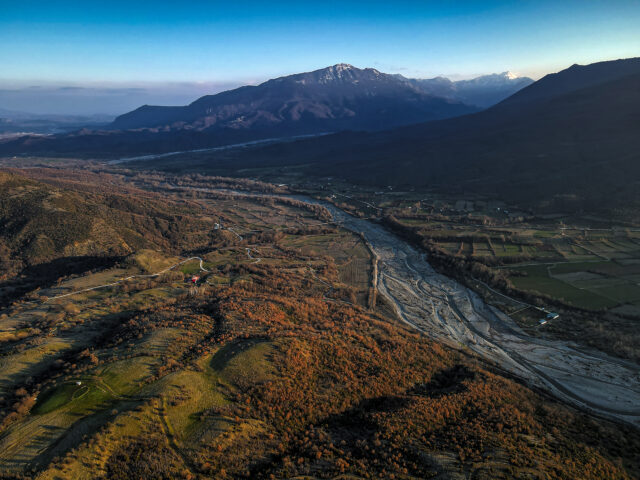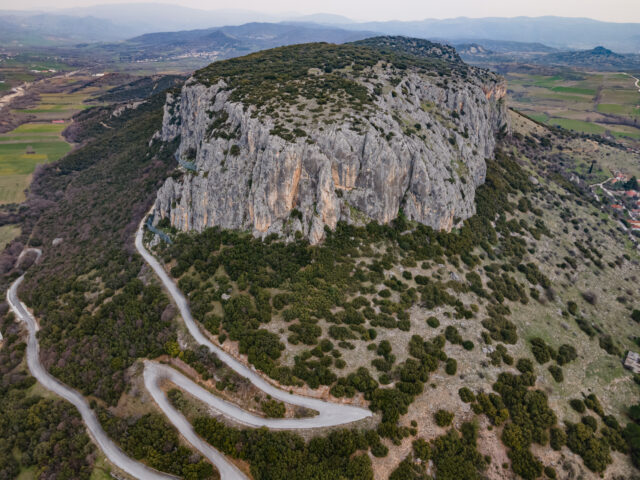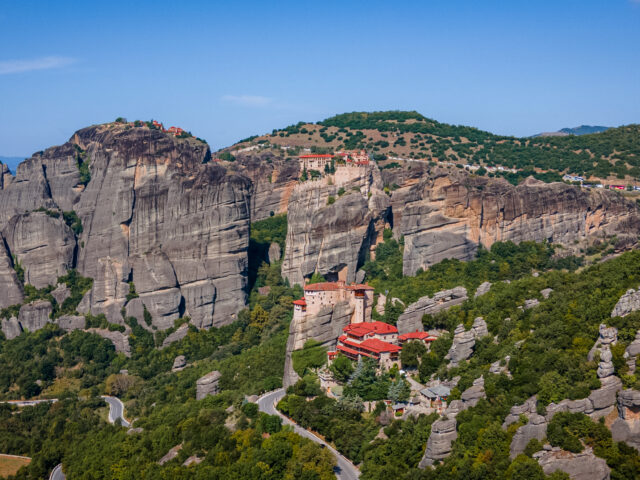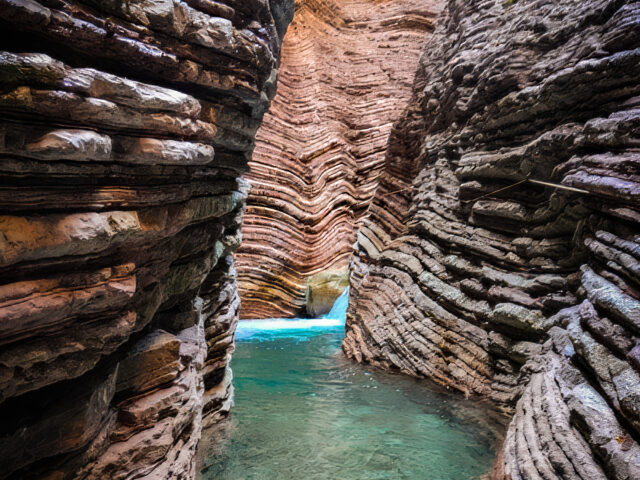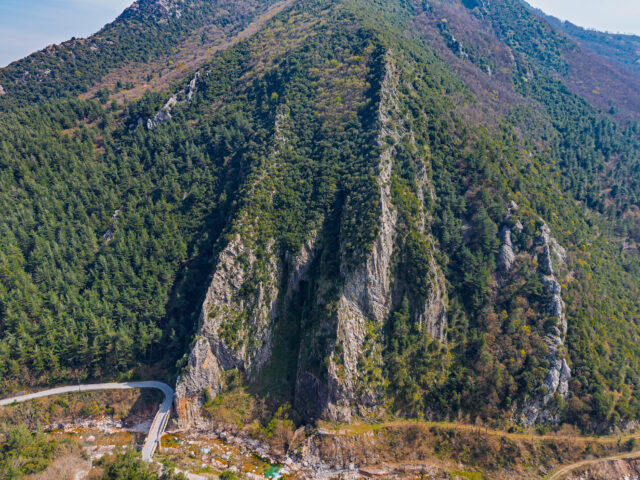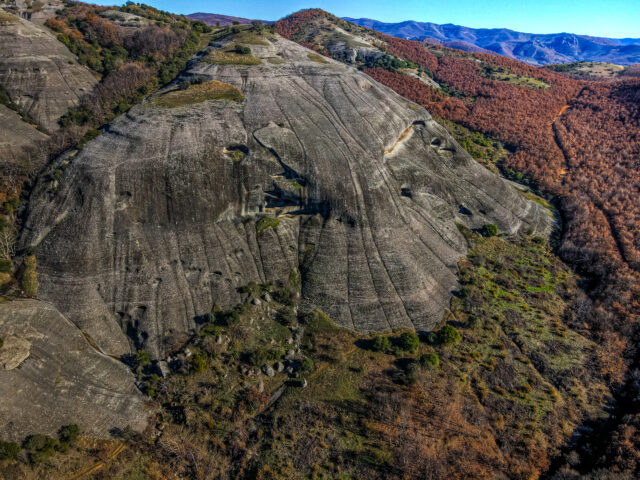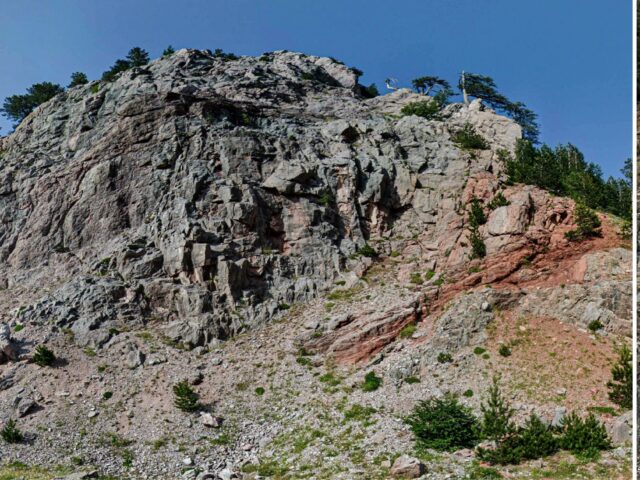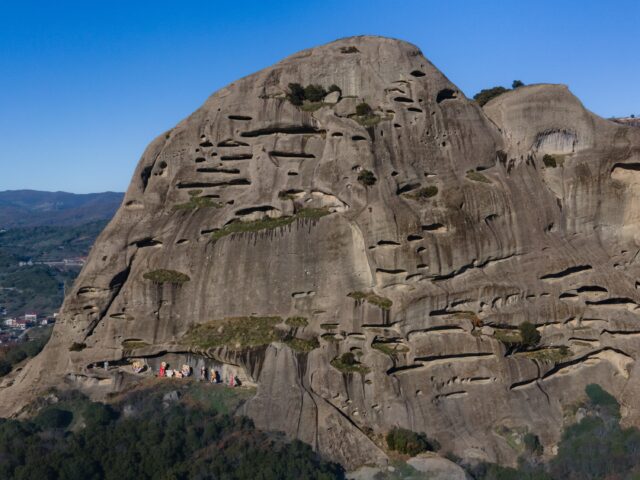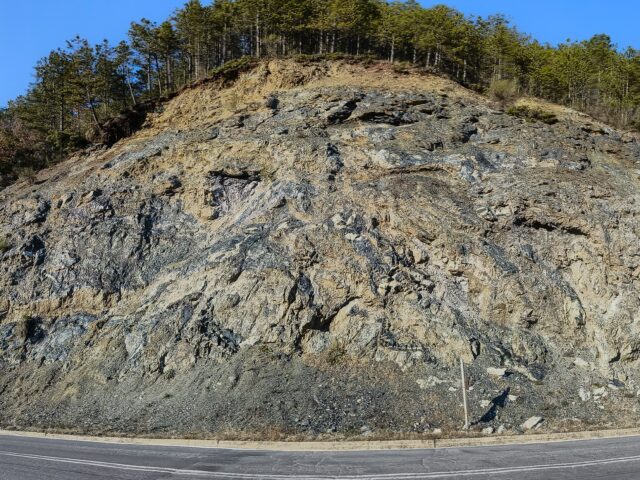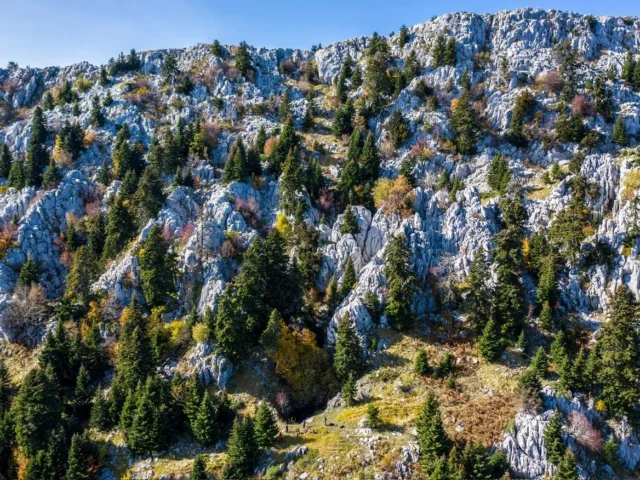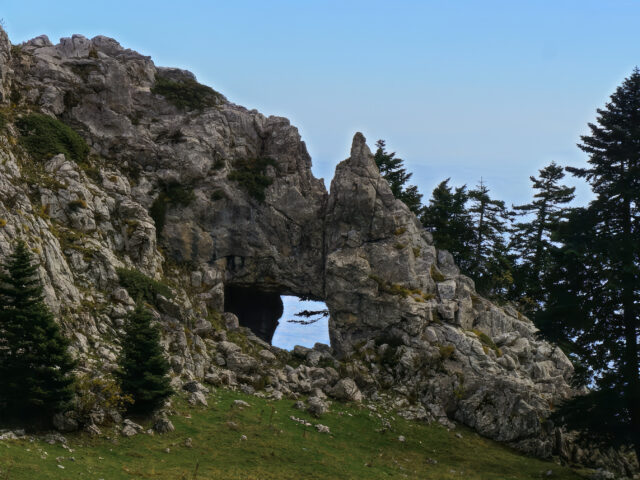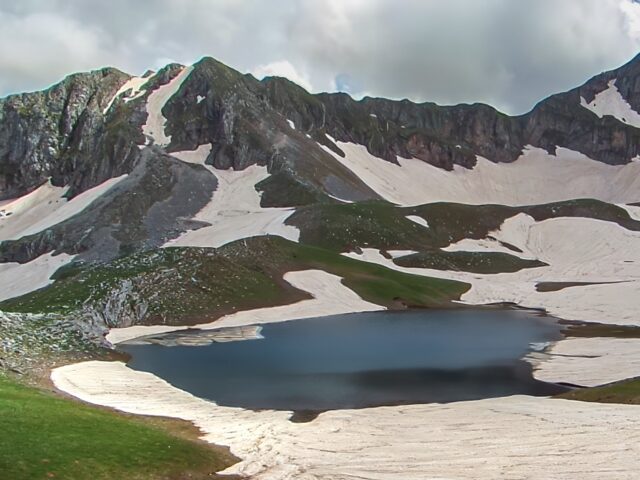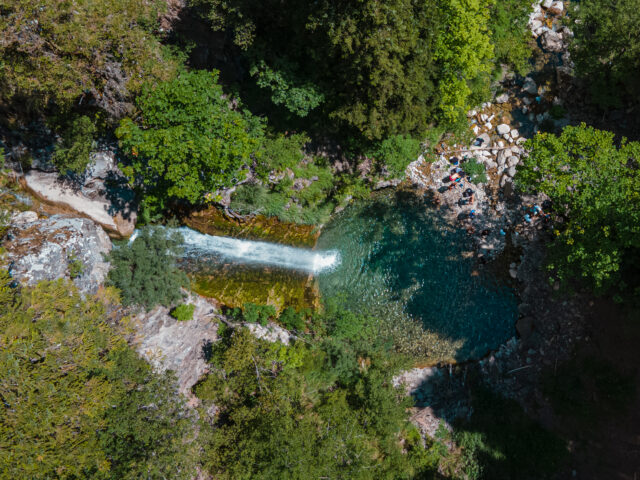Gavros Landforms
Address
Gavros 420 32
GPS
39.79724673905, 21.598288615289
The landforms of Gavros are a continuation of the Meteora complex to the north. The rocky outcrops of cohesive conglomerates and sandstones of the Meteora Conglomerate unit were deposited as submarine drifts and belong to the Meso-Hellenic Trench, as part of the Pentalophos-Meteora Formation of Upper Oligocene – Lower Miocene age (10-30 million years). The forms exhibited by the rock formations of Gavros are due to recent tectonic activity in the area, which formed surfaces of discontinuities, allowing water to circulate, eroding the sediments of the molasse formations, so as to form these unique rock formations. A combination of orthogonal faults and the bedding of the conglomerate rocks create the distinctive toothed shape of the Gavros rocks.
From a geological point of view, the rocks of the wider Meteora area (Kalampaka, Gavros, Agios Dimitrios, etc.) are composed of molassic sediments belonging to the MesoHellenic Trench, a huge sea basin that started from the geographical area of present-day Thessaly and reached as far as present-day Albania. It was at least 200 kilometers long and 30-40 kilometers wide. On either side of this narrow sea basin emerged mountain ranges that are identical to today’s morphology. To the west is the Pindos mountain range and to the east are the mountains Vermio, Askio, Vourinos and Vouniasa. The large rivers that flowed into this sea eroded the above mountain ranges, transporting and depositing large quantities of materials for millions of years. The MesoHellenic Trench includes the geological formations of Tsotyli, Pentalofos-Meteora, Eptachori and Krania-Rizomatos that appear in the Geopark. The rocks of Meteora consist of the Meteora Conglomerates, a series of cohesive conglomerates and sandstone layers, part of the Pentalofos-Meteora Formation of Upper Oligocene-Lower Miocene age (10-30 million years). The Pentalofos-Meteora Formation can be seen in the Meteora-Pyli Geopark from the northern limits of the park with the prefecture of Grevena to Sarakina and Peristera in the south. The Meteora Conglomerates are Gilbert-type deltaic deposits. Gilbert-type deltaic deposits are also found in large areas in the northern part of the Peloponnese (age >5 million years) and are currently deposited underwater in the Gulf of Corinth (mouths of Selenitis, Vouraikos River, etc.). The cohesive conglomerates and sandstones (turbidites) were deposited 10-20 million years ago underwater, at the mouths of large rivers from the northernmost part of the Meso-Hellenic Trench. The cobbles and gravels that we see today in the conglomerates of Meteora consist of metamorphosed, granitic and carbonate rocks, and were transported by rivers from the mountains that surrounded the Meso-Hellenic Trench.
The relief of the area is suitable for climbing activities on the steep rocks that surround the village of Gavros. The visitor can enjoy the landscape through the many paths that cross the rocks of Gavros. West of the entrance to the village we find the characteristic rock Tsitsilopetra while in the southeast of the village paths offer access to the rocks Nyfitsa and Platopetra, to the Monastery of Agios Nikolaos Gavros as well as to the small waterfalls and ponds of Gavros (Kazanakia) with stream water that springs from the rocks.
